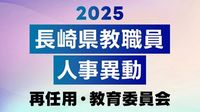Nagasaki Prefecture has officially announced personnel changes for teaching staff set to take effect on April 1, 2025. On March 20, the prefectural government confirmed details regarding the shifts in educational staff, which signal not just a routine administrative adjustment but also significant changes in management diversity.
The report highlights a total of 1,213 personnel changes, a slight decrease from the previous year’s count of 1,275. This year, the percentage of female managers among teaching staff received notable attention, rising to 19.9%, a commendable increase of 2.4 percentage points. This upward trend denotes a gradual push towards gender equity in leadership roles within Nagasaki's educational institutions.
Specifically, in elementary and junior high schools, the number of female managers stands at 145, representing 15.7% of the management positions. High schools and special support schools have shown even more robust representation, with women occupying 50 roles, which amounts to 20.3%. Overall, female managers make up 16.7% of the county's educational leadership, amounting to 195 women, which marks a 1.6-point increase from the previous year.
With these changes, the prefecture was also able to announce that it has recruited 517 newly employed teachers, a rise of 16 from last year. Out of these new hires, 352 will fill compulsory teaching positions, while another 165 will be placed in prefectural roles.
However, it wasn’t all good news regarding retirements. This year, due to a recent raise in the retirement age, the total number of retirees—including those leaving due to mandatory retirement, reached a staggering 694, a substantial increase of 334 compared to the previous year's zero mandatory retirements.
In conjunction with personnel adjustments, the Nagasaki Prefectural government is also rebranding its approach to attracting international tourists. The International Tourism Promotion Division undertakes this initiative, now to be renamed the 'Inbound Promotion Division,' as part of a broader strategy to bolster the local economy through tourism revenue.
The prefecture's push towards improving gender representation and expanding teaching staff reflects growing acknowledgment of diversity as a strength within the educational sector. By fostering a more inclusive environment, officials hope not only to enhance the quality of education but also to create role models for young female students, inspiring future generations.
The personnel shifts and organizational changes were communicated through platforms such as the NBC application, which now provides detailed information about teaching personnel, including the ability to search by teacher's name or school. This feature aims to make it easier for parents and students to stay informed about who will be teaching in their schools next year.
Nagasaki’s efforts to promote gender diversity coincide with a national trend toward enhancing representation among women in leadership and professional roles, paralleling initiatives seen across Japan in various sectors.
As the prefecture prepares to implement these changes on April 1, both educators and the broader community await to see the impact—especially given the focus on fostering a more equitable and robust educational environment.
The changes underscore a pivotal movement in Nagasaki Prefecture’s educational landscape, highlighting commitments to gender equality and proactive measures in tourism enhancement. Both are essential elements for the region's future as it looks to recover and thrive in a post-pandemic world.
The ongoing narrative surrounding personnel shifts not only illuminates the internal dynamics of Japan’s educational systems but also sets an essential example of how strategic organizational adjustments can benefit various stakeholders, from students to educators, and the larger community as a whole.






